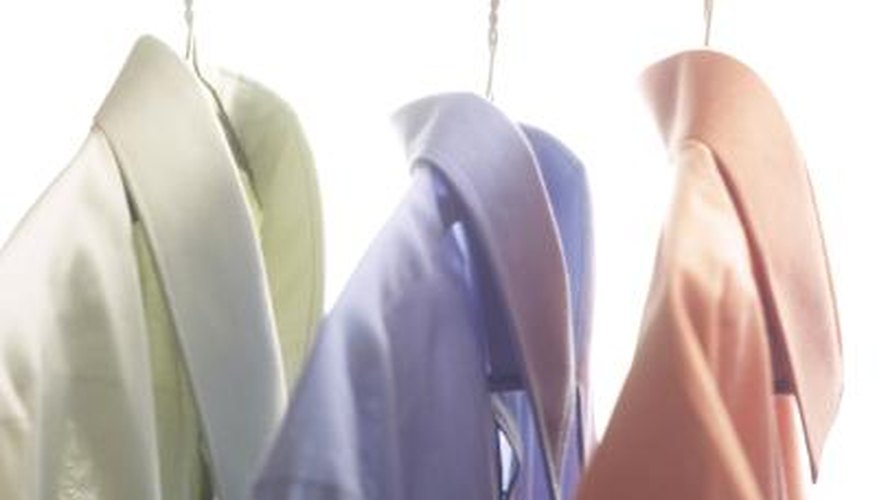Picture this: You are getting ready for work and you grab one of your favourite collared shirts. You start pushing the buttons through their respective holes; beginning with the bottom one and working your way up. As you get to the top button and start to straighten the collar, you notice little bubbles or wrinkles across the collar's surface; they weren't there the last time you wore the shirt. Where did they come from?
To Fuse or Not to Fuse
Before the bubbles are explained, there are two topics you need to understand: interfacing and the two main types of collars. Interfacing is a material bonded or sewn onto the underside of a fabric that strengthens, stiffens and provides shape. Interfacing is used in the two primary types of shirt collars: traditional and fused. A traditional collar either has no interfacing or the interfacing is sewn into the collar, creating a more relaxed look. A fused collar has interfacing heat pressed and bonded to the fabric to make the collar stiff. A fused collar, being more rigid and resistant to deformation, is generally more desirable in dress and business shirts. The point of fusion is where the problem of pesky bubbles comes to the surface.
- Before the bubbles are explained, there are two topics you need to understand: interfacing and the two main types of collars.
- A traditional collar either has no interfacing or the interfacing is sewn into the collar, creating a more relaxed look.
What Causes the Bubbling?
Bubbles only occur on fused collars when the interfacing starts to separate from the shell fabric. Usually, the bubbles only appear after several washings and are either the result of a poor bonding of the interface material during manufacturing or are due to the age of the garment. Before accusing your dry cleaner of ruining your shirt, understand that most of the time, the bubbles are a result of poor adhesion during the heat press portion of manufacturing.
Can the Collar be Repaired?
Unfortunately there is not a good fix for this problem. That being said, depending on where the shirt was purchased and how long ago, you might be able to return it as long as you followed the care instructions. Alternatively, if the bubbles are only showing on one side, a tailor can flip the collar.
How to Protect your Collar
Follow the care instructions for the clothing. Avoid exposing it to temperatures higher than 65.6 degrees C. This is frequently the temperature at which the interfacing will start to de-bond. The manual for your washer and dryer will say what temps the "hot, warm and cold" settings run at. The same instructions apply to ironing. When shopping for new clothing, check the collar before purchasing for bubbles or wrinkles and save yourself a lot of headache before laying down a single dollar.
- Follow the care instructions for the clothing.
- The manual for your washer and dryer will say what temps the "hot, warm and cold" settings run at.
